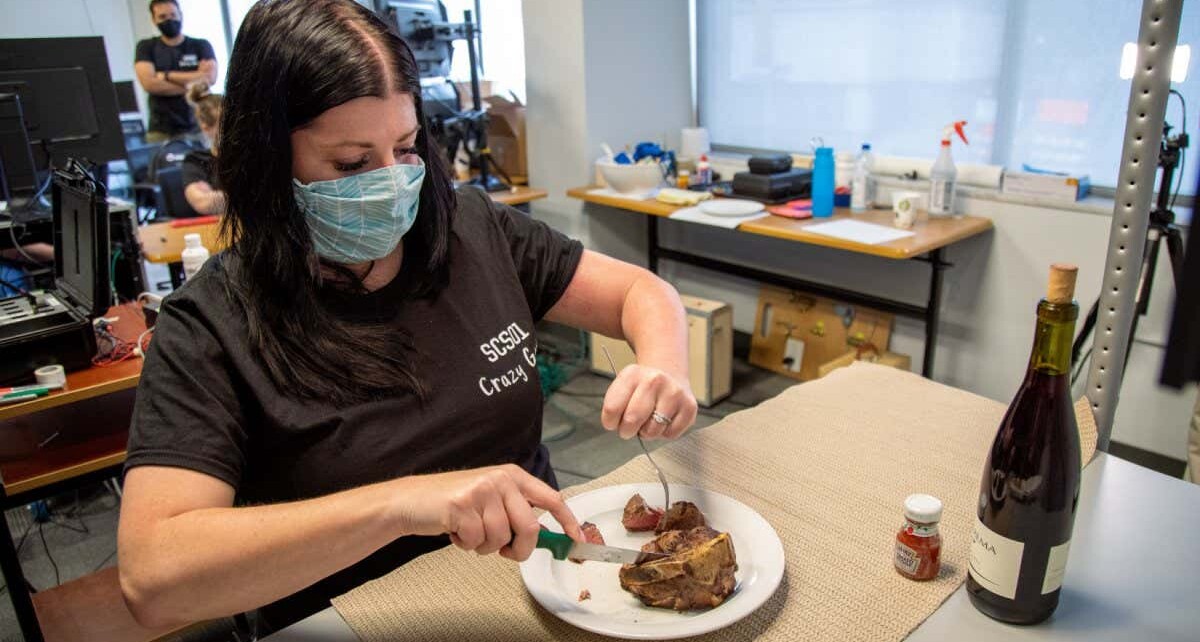[ad_1]
Two people with upper body paralysis due to stroke partially regained arm movements after electrical stimulation of neurons in the spinal cord
Health
20 February 2023
A woman partially paralysed by stroke was able to use utensils to eat independently after spinal cord stimulation Tim Betler, UPMC and University of Pittsburgh Schools of the Health Sciences Copyright: Tim Betler, UPMC and University of Pittsburgh Schools of the Health Sciences
Electrically stimulating spinal neurons in two people with upper body paralysis due to stroke helped them partially regain arm function. This is the first-time spinal cord stimulation has been used to treat upper body paralysis in humans.
Stroke is the leading cause of paralysis in the US. It can permanently weaken brain signals so that receptors in the spinal cord can’t detect them and trigger movement. “We thought, what if there was a way to increase the receptivity of the spinal circuits so they can suddenly hear more?” says Marco Capogrosso at the University of Pittsburgh in Pennsylvania.
He and his colleagues surgically placed eight electrical nodes on each side of the spinal cords of two people with stroke-induced upper body paralysis. It’s a minimally invasive surgery that threads all eight electrodes connected together through a spaghetti-sized puncture using a catheter, he says. When active, the nodes electrically stimulated receptors in the spine that control arm movement, increasing their sensitivity to brain signals.
The participants completed tasks measuring arm strength, movement and function 5 days a week for 4 weeks. When the electrodes were on, the first participant saw a 40 per cent increase in hand grip strength while the second participant saw a 108 per cent increase. Both could reach objects in virtual reality that they couldn’t when the stimulation was off.
The first participant could also open a lock and use utensils to eat independently for the first time in 9 years when stimulation was on. The second participant couldn’t complete these tasks as her paralysis was more severe, but she could grasp, lift and place a metal cylinder over a wooden peg, which she couldn’t do without stimulation.
“What we didn’t expect was that some of this recovery persisted even when the stimulation was removed,” says Capogrosso. The participants completed an assessment before the study and 4 weeks after their last stimulation that measured motor recovery on a 66-point scale. The first participant’s score increased by 11 points and the second by 2 points.
“There’s a gigantic potential for this to become a therapy for stroke, especially because the technology we utilise is already approved for other diseases,” says Capogrosso.
Sign up to our free Health Check newsletter for a round-up of all the health and fitness news you need to know, every Saturday
More on these topics:
[ad_2]
Source link




